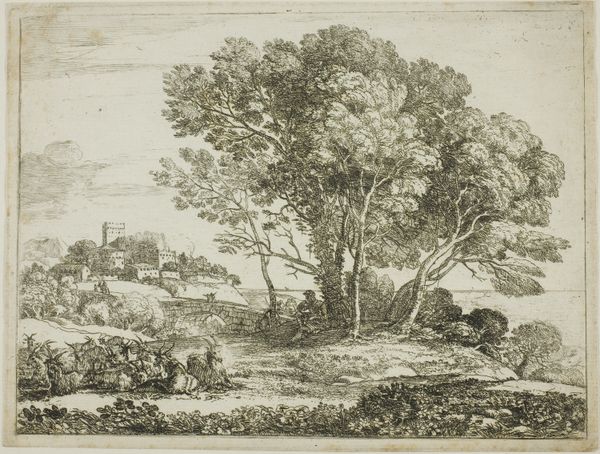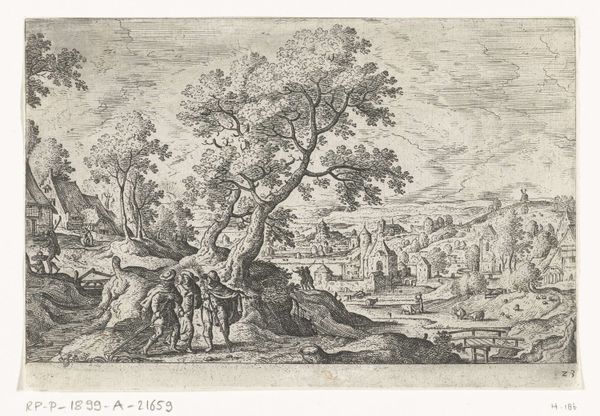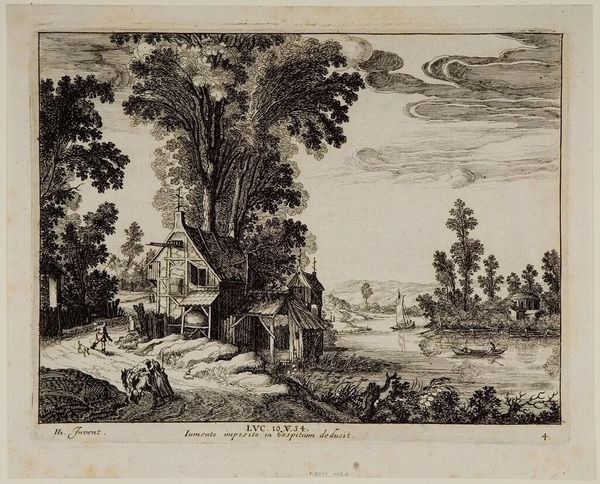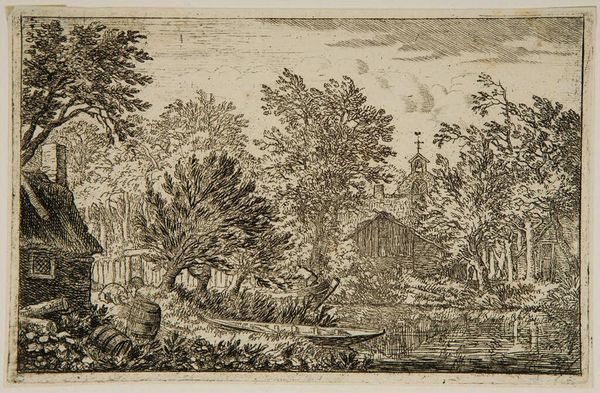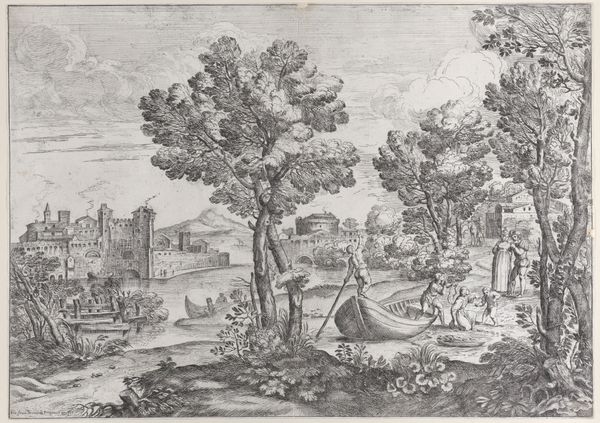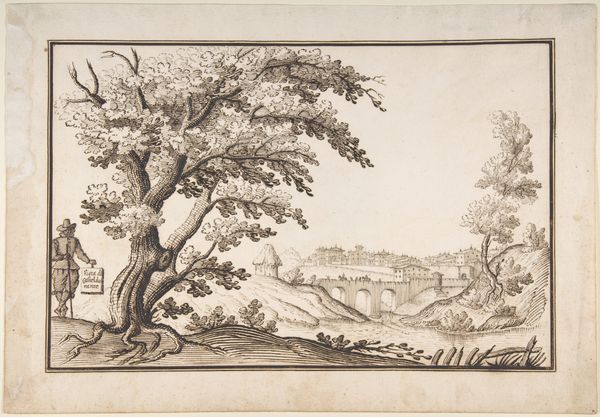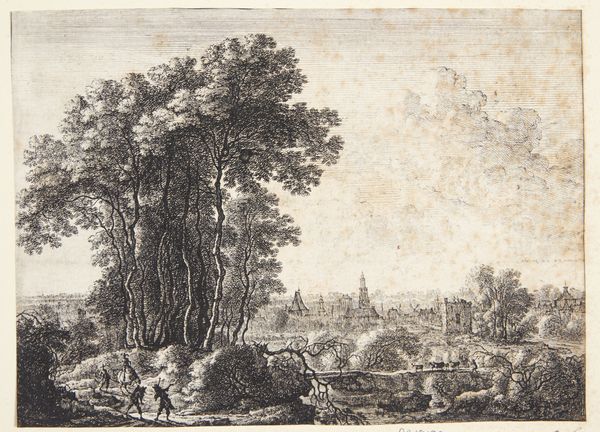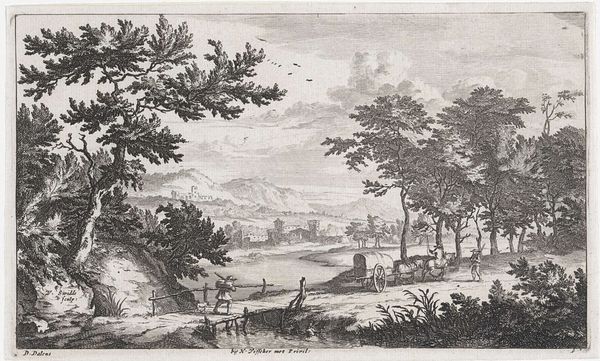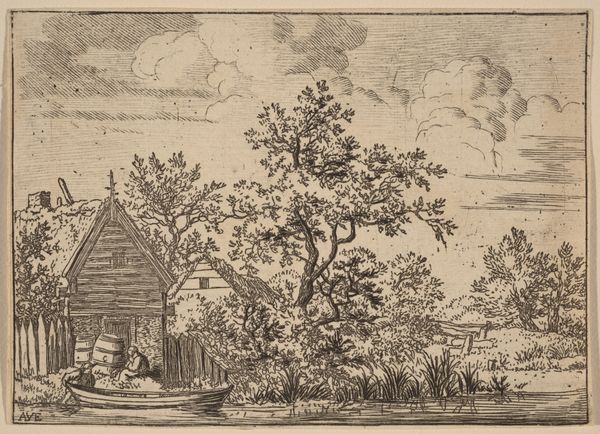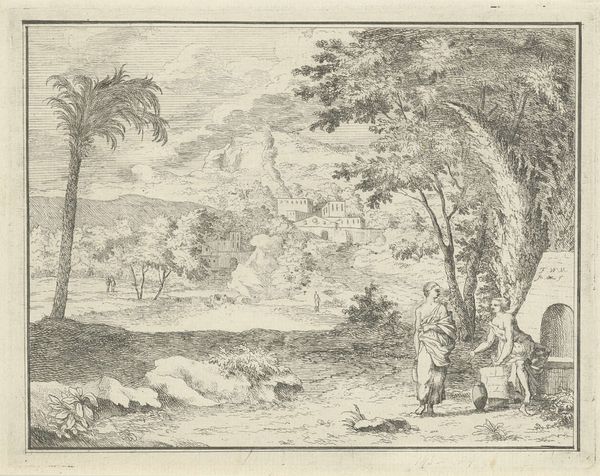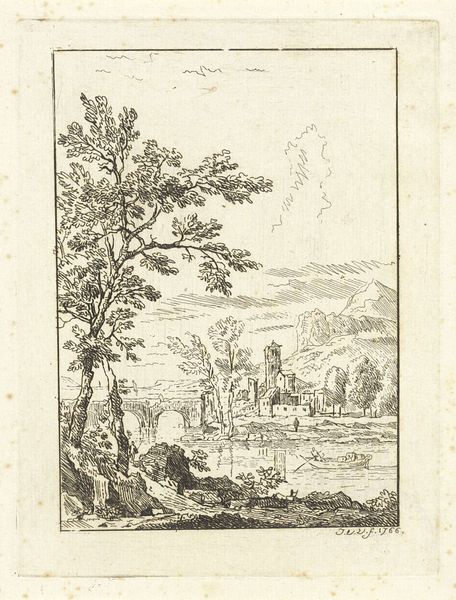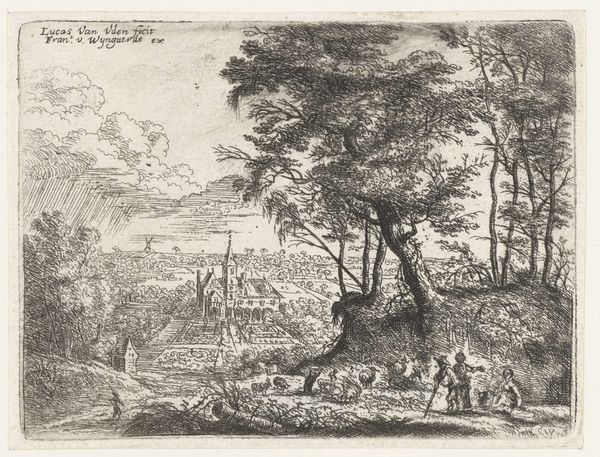
drawing, print, etching, pen
#
drawing
#
baroque
#
pen drawing
# print
#
etching
#
landscape
#
etching
#
pen
#
italian-renaissance
Dimensions: plate: 11 × 24.8 cm (4 5/16 × 9 3/4 in.) sheet: 21.1 × 33 cm (8 5/16 × 13 in.)
Copyright: National Gallery of Art: CC0 1.0
This print of the Colosseum was created by Israel Silvestre sometime in the 17th century. It’s an etching, meaning the artist would have covered a metal plate with a waxy ground, then drawn through it with a sharp needle. When dipped in acid, the exposed lines would be eaten away, leaving an image that could be inked and printed. The magic of etching is in the line itself. Look closely, and you’ll see how Silvestre varied the pressure of his hand to create lines that are thick and confident in some places, thin and delicate in others. He likely made many preparatory sketches before committing to the final composition. The printmaking process allowed Silvestre to produce multiple copies of this image and disseminate it widely. In this way, the work speaks to a growing market for views of famous sites, a kind of early tourism industry. The image flattens the grandeur of the Colosseum, turning it into a commodity for consumption. This speaks to the relationship between artistic production and economic forces, highlighting how even seemingly straightforward depictions are shaped by the dynamics of labor, politics, and consumption.
Comments
No comments
Be the first to comment and join the conversation on the ultimate creative platform.
